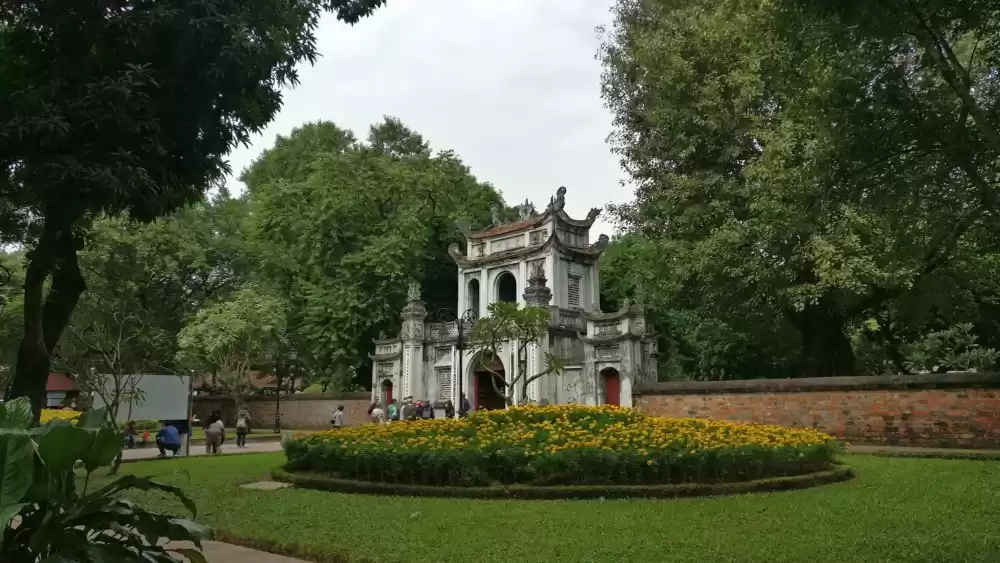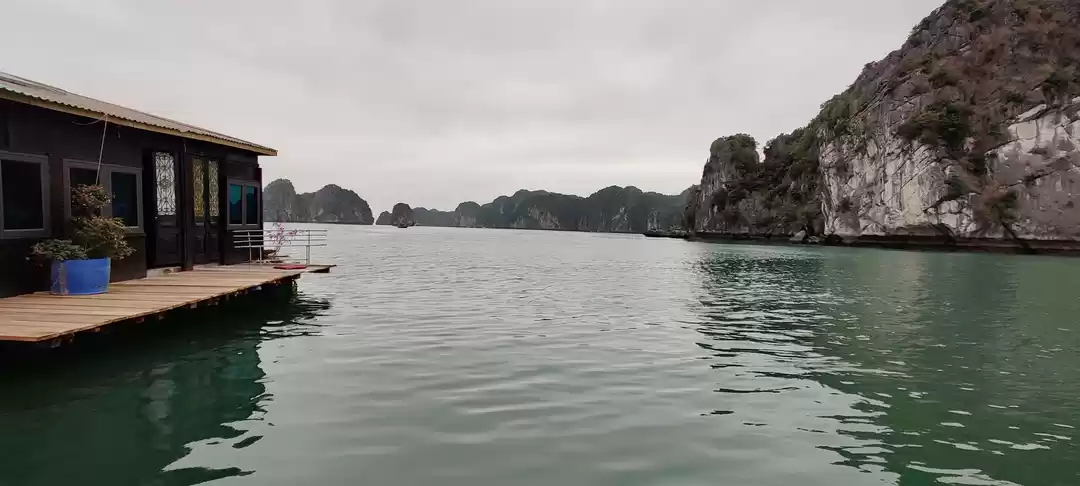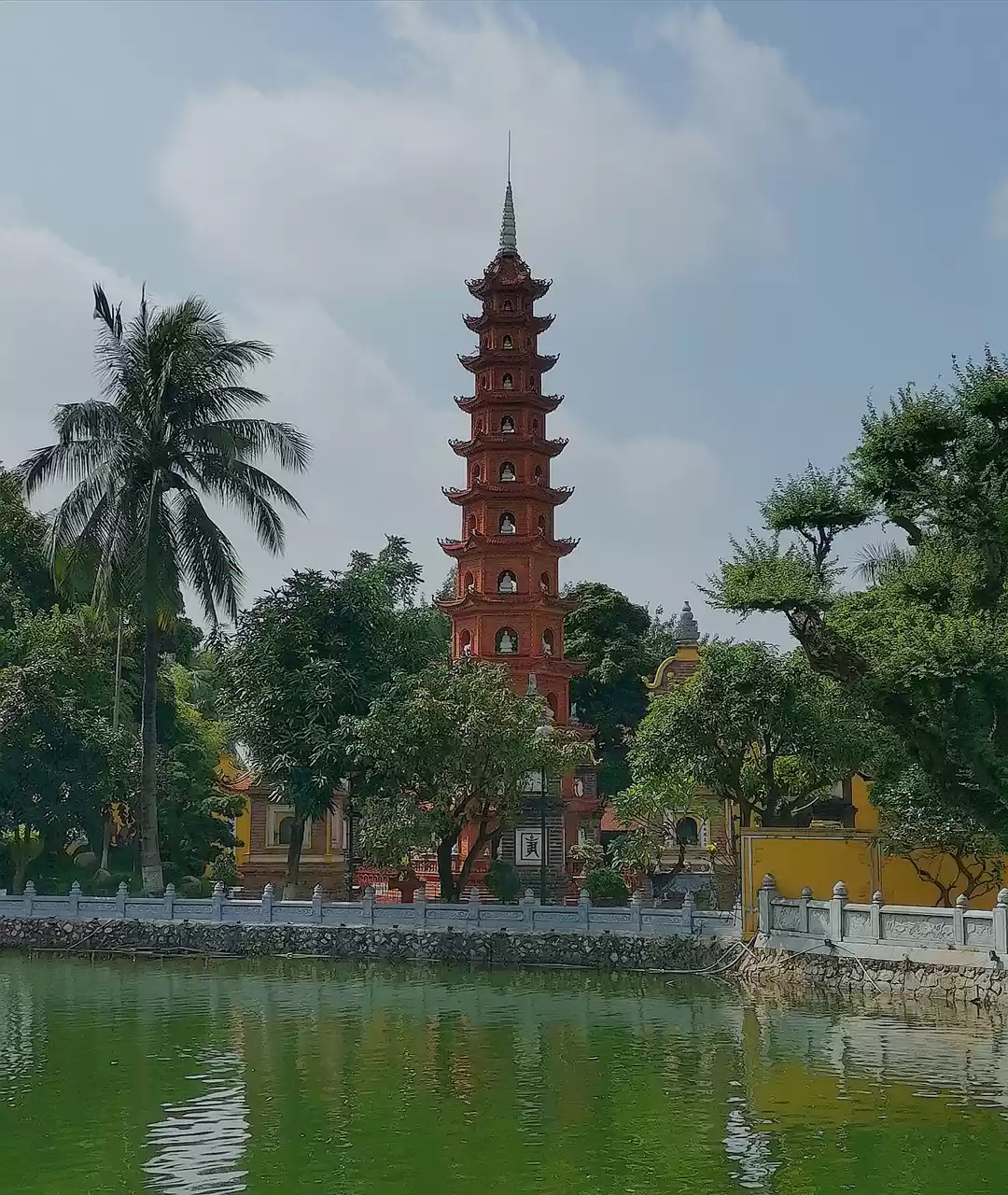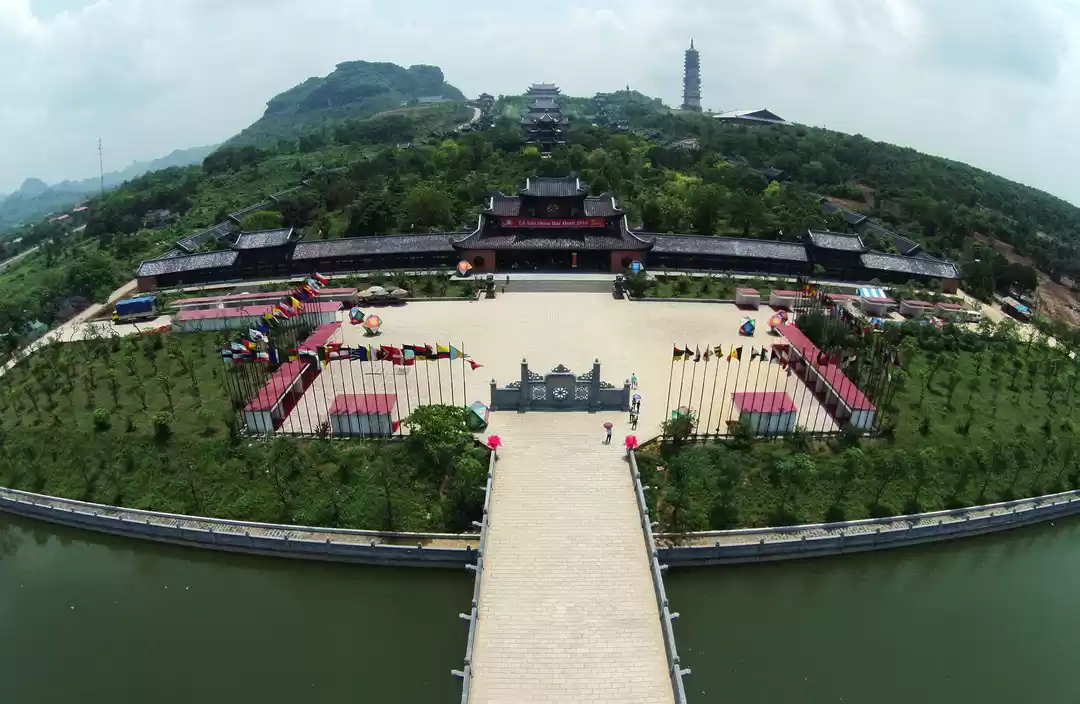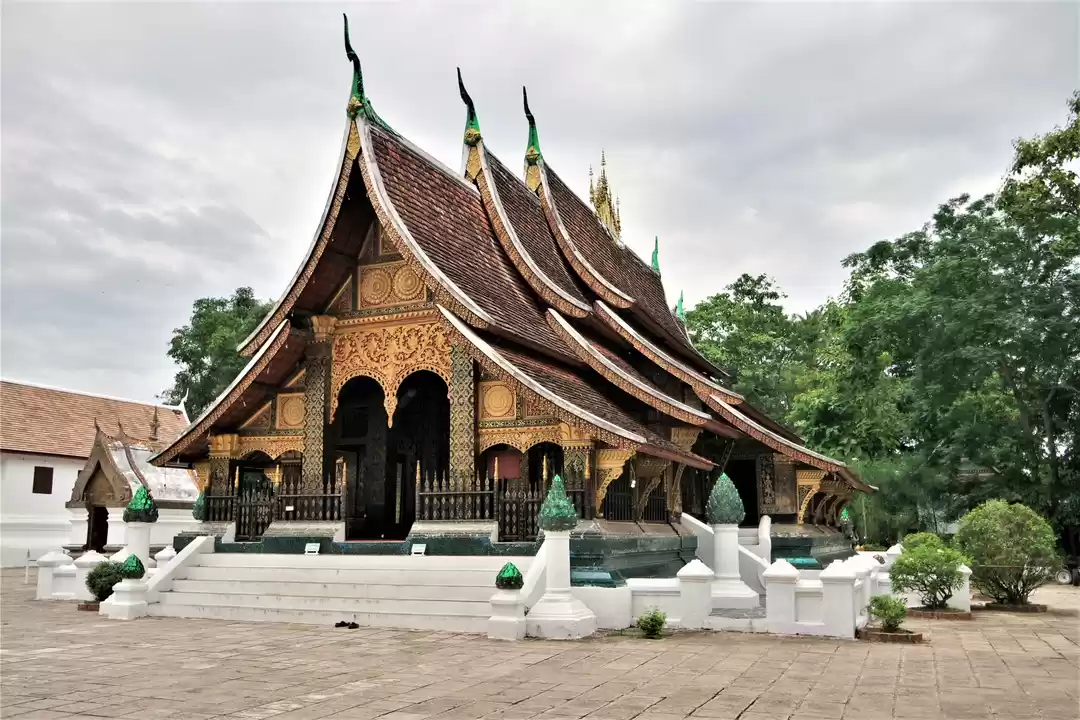Have you ever wondered what it would be like to visit the largest and most spectacular Buddhist complex in Vietnam? Imagine walking through a 3-km corridor of 500 arhat statues, admiring the largest gilded bronze Buddha in Asia, and witnessing the ancient rituals and offerings of the Bai Dinh Pagoda Festival. This is what awaits you at Bai Dinh Pagoda, a must-see destination for anyone who loves culture, history, and spirituality.
In this article, you will learn everything you need to know about Bai Dinh Pagoda, including its history, architecture, records, festival, and travel tips. You will also discover how to get there, when to go, and where to stay. By the end of this article, you will be ready to plan your trip to Bai Dinh Pagoda and experience its beauty and charm for yourself.
Meta description: Bai Dinh Pagoda is the largest and most spectacular Buddhist complex in Vietnam, holding nine records in Vietnam and Asia. Learn about its history, architecture, festival, and travel tips in this comprehensive guide.
History of Bai Dinh Pagoda
Bai Dinh Pagoda is not only a religious site, but also a historical and cultural relic. The name Bai Dinh means “the worship place of the kings”, as the pagoda was associated with the feudal dynasties that ruled Vietnam from the 10th to the 13th centuries. The pagoda was built on the land where King Dinh Tien Hoang, the founder of the Dinh dynasty, was born and raised. It was also the place where the Ly and Tran kings came to pray and offer incense before their battles against the invaders. The pagoda was recognized as a national historical and cultural relic in 1997, and has been renovated and expanded several times since then.
Architecture of Bai Dinh Pagoda Complex
Bai Dinh Pagoda Complex consists of two parts: the ancient pagoda and the new pagoda. The ancient pagoda is located on the top of a mountain, surrounded by natural scenery and ancient trees. It has a simple and rustic architecture, with a main hall, a bell tower, and a cave. The main hall houses a statue of Buddha Sakyamuni, while the bell tower has a bronze bell dating back to the 13th century. The cave is where the Buddha relics are enshrined, and where the visitors can enjoy a panoramic view of the area.
The new pagoda is located at the foot of the mountain, covering an area of 700 hectares. It is a massive and magnificent architectural complex, with three internal gates, a 3-km corridor of 500 arhat statues, a bell tower, a Kuan Yin hall, a Buddha Dharma Lord temple, and many other structures. The new pagoda is designed in a traditional Vietnamese style, with curved roofs, dragon carvings, and lotus decorations. The new pagoda is also home to many precious and sacred statues, such as the largest gilded bronze Buddha in Asia, the largest jade Buddha in Vietnam, and the largest Avalokitesvara Bodhisattva in Vietnam.
Bai Dinh Pagoda’s Asian and Regional Records
Bai Dinh Pagoda is not only a religious and cultural site, but also a place of records. The pagoda holds nine records in Vietnam and Asia, which are:
The largest gilded bronze Buddha in Asia: The statue of Buddha Sakyamuni in the main hall of the new pagoda is 16 meters high and weighs 100 tons. It is made of bronze and covered with gold. It is the largest gilded bronze Buddha in Asia, and the second largest in the world.
The largest bronze bell in Vietnam: The bell in the bell tower of the new pagoda is 36 tons in weight and 5.5 meters in height. It is made of bronze and engraved with Buddhist scriptures. It is the largest bronze bell in Vietnam, and the third largest in the world.
The largest bronze Avalokitesvara Bodhisattva in Vietnam: The statue of Avalokitesvara Bodhisattva in the Kuan Yin hall of the new pagoda is 9.5 meters high and weighs 80 tons. It is made of bronze and has 11 faces and 1,000 eyes and hands. It is the largest bronze Avalokitesvara Bodhisattva in Vietnam, and the fourth largest in the world.
The largest jade Buddha in Vietnam: The statue of Buddha Amitabha in the Buddha Dharma Lord temple of the new pagoda is 3.95 meters high and weighs 4 tons. It is made of jade and has a serene and compassionate expression. It is the largest jade Buddha in Vietnam, and the fifth largest in the world.
The largest pagoda area in Vietnam: The new pagoda covers an area of 700 hectares, which is equivalent to 1,000 football fields. It is the largest pagoda area in Vietnam, and one of the largest in the world.
The longest corridor of arhat statues in Asia: The corridor of arhat statues in the new pagoda is 3 km long, connecting the three internal gates. It has 500 arhat statues, each with a different posture and expression. The statues are made of green stone and are 2.3 meters high. They represent the 500 disciples of Buddha who attained enlightenment. It is the longest corridor of arhat statues in Asia, and one of the longest in the world.
The largest number of arhat statues in Asia: The new pagoda has 500 arhat statues, which is the largest number of arhat statues in Asia, and one of the largest in the world.
The tallest stupa in Vietnam: The stupa in the new pagoda is 100 meters high, with 13 floors and 8 sides. It is made of reinforced concrete and covered with white stone. It has a lotus-shaped spire and a golden ball on top. It is the tallest stupa in Vietnam, and one of the tallest in the world.
The largest Bodhi tree in Vietnam: The Bodhi tree in the new pagoda is 25 meters high and 40 meters wide. It is a descendant of the original Bodhi tree under which Buddha attained enlightenment in India. It was donated by the Indian government and planted in 2007. It is the largest Bodhi tree in Vietnam, and one of the largest in the world.
Bai Dinh Pagoda Festival
Bai Dinh Pagoda Festival is one of the most important and popular festivals in Vietnam. It is held annually from the 6th day of the first lunar month to the end of the third lunar month, which usually falls between February and April. The festival attracts millions of pilgrims and tourists from all over the country and the world, who come to pray, worship, and enjoy the festive atmosphere.
The festival begins with a grand procession, in which the sacred objects and offerings are carried from the ancient pagoda to the new pagoda. The procession is accompanied by music, drums, flags, and flowers. The main ritual of the festival is the incense burning, in which the visitors light incense sticks and place them in front of the statues of Buddha and the arhats. The incense burning symbolizes the respect and gratitude to the Buddha and the ancestors, as well as the wishes for peace, happiness, and prosperity.
The festival also offers many other activities and attractions, such as sightseeing, praying, meditating, donating, receiving blessings, watching cultural performances, playing folk games, and tasting local specialties. The festival is a unique opportunity to experience the rich and diverse culture, history, and spirituality of Bai Dinh Pagoda and Vietnam.
Best Time to Visit Bai Dinh Pagoda Complex
The best time to visit Bai Dinh Pagoda Complex is from January to March, when the weather is pleasant and the festival is held. This is the peak season for visitors, who can enjoy the warm and sunny days, the colorful and lively scenes, and the festive and spiritual mood. However, this is also the most crowded and expensive time, so visitors should book their tickets and accommodation in advance, and be prepared for long queues and waits.

If visitors prefer a quieter and cheaper time, they can visit Bai Dinh Pagoda Complex from April to December, when the weather is cooler and the festival is over. This is the low season for visitors, who can enjoy the calm and serene atmosphere, the green and natural scenery, and the peaceful and relaxing mood. However, this is also the rainy and foggy time, so visitors should check the weather forecast and bring appropriate clothes and accessories.
How to Get to Bai Dinh Pagoda from Hanoi
Bai Dinh Pagoda is located in Ninh Binh province, about 100 km south of Hanoi. There are several transportation options to get to Bai Dinh Pagoda from Hanoi, such as bus, train, motorbike, or car. Here are the details, advantages, and disadvantages of each option:
Option Price Duration Convenience Safety
Bus 100k - 200,000 VND 2 - 3 hours High High
Train 80,000 - 150,000 VND 2 - 2.5 hours Medium High
Bike 150,000 - 200,000 VND 3 - 4 hours Low Medium
Car 1,000,000 - 1,500,000 VND 1.5 - 2 hours High High
The bus is the most convenient and safe option, as it is cheap, fast, and comfortable. There are many bus companies that offer daily trips from Hanoi to Ninh Binh, such as Hoang Long, Ninh Binh Xanh, or Tam Coc. The buses depart from different stations in Hanoi, such as Giap Bat, My Dinh, or Nuoc Ngam. The buses stop at Ninh Binh city center, where visitors can take a taxi or a motorbike taxi to Bai Dinh Pagoda, which is about 15 km away.
The train is another convenient and safe option, as it is also cheap, fast, and comfortable. There are several trains that run from Hanoi to Ninh Binh every day, such as SE5, SE7, SE19, or LC3. The trains depart from Hanoi Railway Station, and arrive at Ninh Binh Railway Station. From there, visitors can also take a taxi or a motorbike taxi to Bai Dinh Pagoda.
The motorbike is a more adventurous and flexible option, as it allows visitors to explore the countryside and the scenic routes along the way. However, it is also more challenging and risky, as the roads can be crowded, bumpy, and dangerous. Visitors need to have a valid driver’s license, a helmet, and a good sense of direction. They can rent a motorbike from various shops in Hanoi, such as Flamingo Travel, Rent A Bike, or Motorbike City. The route from Hanoi to Bai Dinh Pagoda is mostly along Highway 1A, which passes through many towns and villages.
The car is the most comfortable and luxurious option, as it offers privacy, convenience, and speed. However, it is also the most expensive and wasteful option, as it consumes a lot of gas and money. Visitors can rent a car from various agencies in Hanoi, such as Hertz, Avis, or Budget. They can also hire a driver, who can guide them and take care of the parking and tolls. The route from Hanoi to Bai Dinh Pagoda is similar to the motorbike route, but faster and smoother.
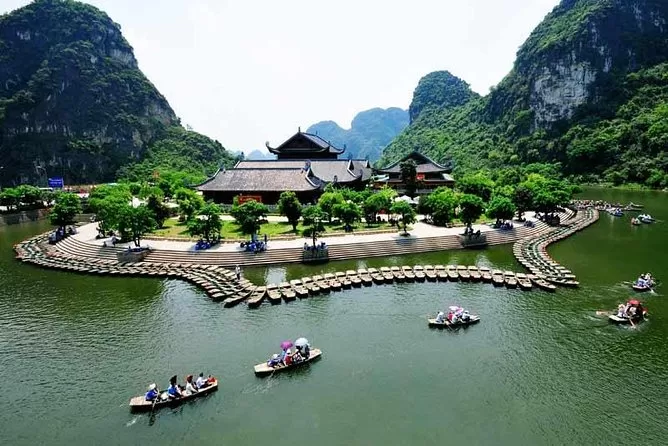
Quick Tips for Visiting Bai Dinh Pagoda Complex
Before you visit Bai Dinh Pagoda Complex, here are some quick tips that will help you make the most of your trip:
1. Wear modest clothes that cover your shoulders and knees, as the pagoda is a sacred and respectful place. You may also need to remove your shoes before entering some of the halls and temples.
2. Bring water and snacks, as the pagoda complex is very large and can take several hours to explore. There are also some shops and stalls near the entrance, where you can buy food and drinks, but they may be more expensive and less hygienic.
3. Rent an electric car, as the pagoda complex is spread over a vast area, and walking can be tiring and time-consuming. The electric car costs 30,000 VND per person for a round trip, and can take you to the main attractions within the complex. You can also rent a bicycle for 50,000 VND per day, if you prefer a more active and eco-friendly way of transportation.
4. Respect the local customs and beliefs, as the pagoda is a place of worship and culture. Do not make loud noises, take photos without permission, or touch the statues and relics. You can also join the locals in their rituals and offerings, such as lighting incense, praying, or donating, but only if you are sincere and respectful.
5. Enjoy the scenery and the atmosphere, as the pagoda is a place of beauty and tranquility. You can admire the stunning views of the mountains, the lake, and the fields, as well as the impressive architecture and art of the pagoda. You can also meditate, relax, and feel the spiritual energy of the pagoda.
Bai Dinh Pagoda is a remarkable destination that will leave you in awe and admiration. It is a place where you can learn about the history, culture, and spirituality of Vietnam, as well as enjoy the natural and architectural beauty of the pagoda. Whether you visit during the festival or the off-season, you will find something to suit your interests and preferences. Bai Dinh Pagoda is a place that you should not miss when you travel to Vietnam.
We hope that this article has given you a comprehensive and informative guide to Bai Dinh Pagoda, and that you are ready to plan your trip and experience it for yourself. If you have any questions, comments, or experiences to share, please feel free to leave them in the section below.
We would love to hear from you and help you with your travel needs. Thank you for reading and happy travels!






